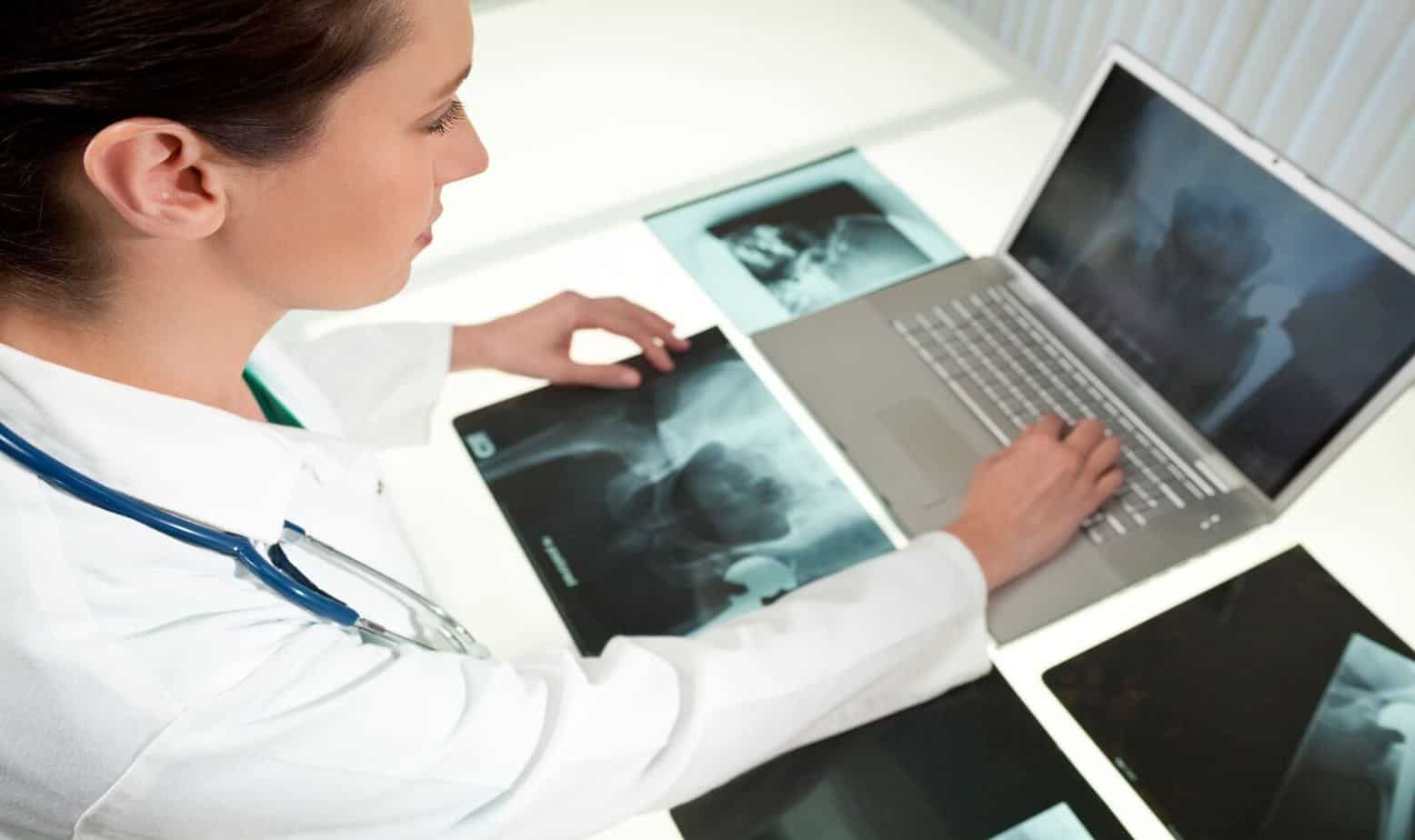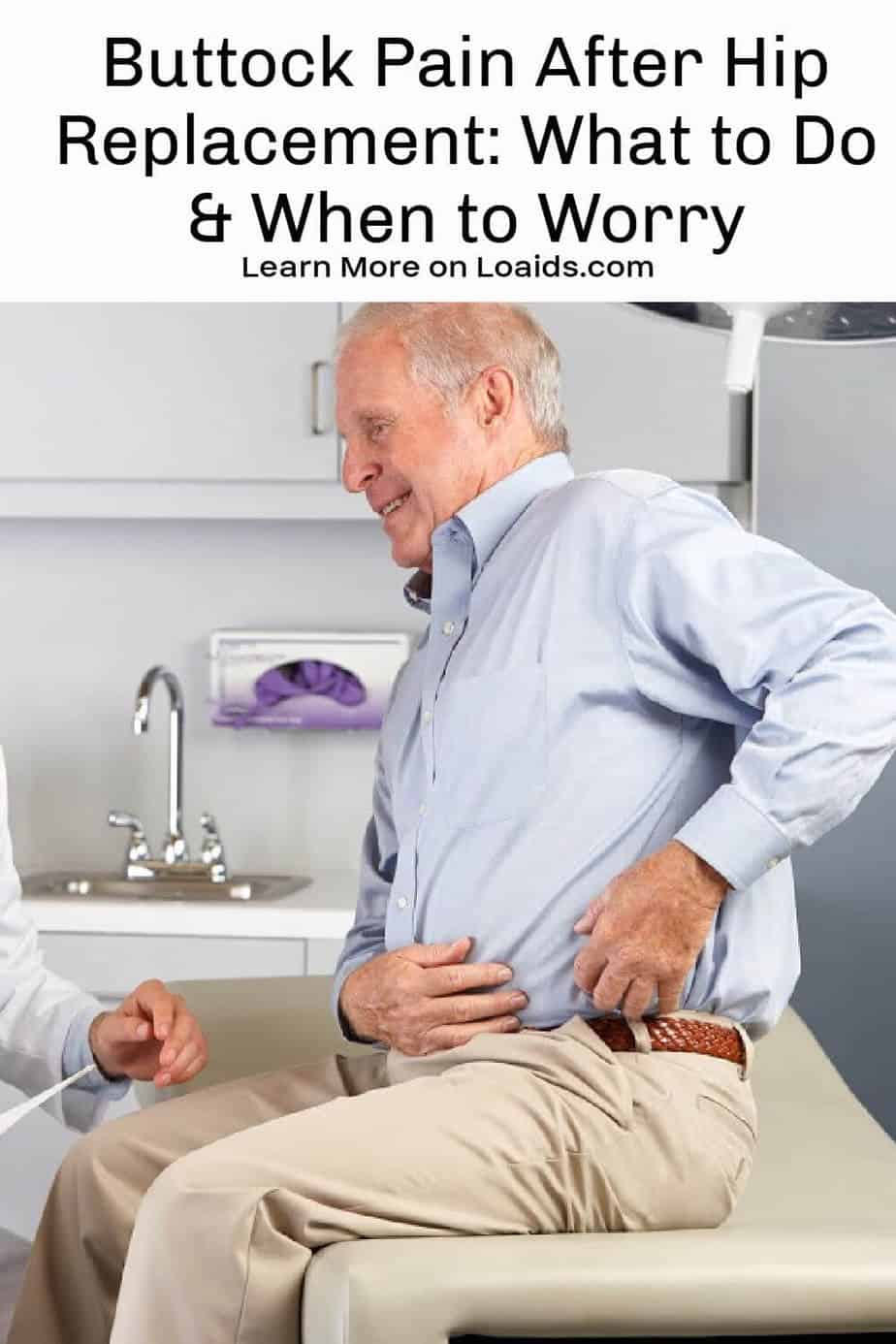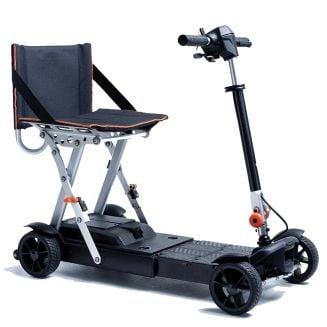Buttock pain after hip replacement surgery is a normal part of healing, but it can also indicate that something is wrong.
Understanding the expected pain and side effects of a hip replacement is important for knowing when your buttock pain is normal – or when you need medical attention.
Let’s explore pain after a hip replacement and discuss some great at-home exercises to reduce it and get you back on your feet after surgery.
What Are the Side Effects of Hip Replacement?
A hip arthroplasty (replacement) surgery is an invasive procedure.
Even with many modern advancements, it is expected that patients who have undergone a hip replacement will experience some side effects during the healing process.
Using aids such as a lower back belt can provide support and alleviate some discomfort during recovery.
Some common side effects of hip replacement surgery include:
- Infection of the surgical site or the newly implanted hip joint
- A dent on the side of the buttocks from settling scar tissue
- Surgical pain in the hip joint and surrounding area
- Nerve damage
- Leg length differences
- Hip joint dislocation
Some complications of hip replacement surgery are more common than others. But how do I know if my buttock pain is normal or if I need to see my doctor?
What Type of Pain is Normal After Hip Replacement?

Unfortunately, pain after hip replacement surgery is unavoidable.
Our body can experience different types of pain from various sources, and it can be important to know how to identify what pain is normal and what pain indicates a problem.
Types of normal pain after a hip replacement:
1. Surgical Pain
Because of the invasive nature of a hip replacement, is it very normal to experience surgical pain as you start to heal. Surgical pain is often quite intense for the first couple of days after the procedure.
This type of pain will be localized to the surgical site (the hip, incisions, and buttocks) and will very likely require pain medication to manage.
Throughout the normal healing process, your surgical pain will become less and will eventually disappear.
2. Swelling and Inflammation
After a hip replacement, the body starts to heal by creating inflammation and swelling in the affected area.
The pressure and irritation of the inflammation can be quite painful during the initial days after your procedure.
Using anti-inflammatory pain medications (with your doctor’s approval) and resting your hip can help reduce the inflammation as you continue to heal.
3. Pain With Movement
After the initial healing period, it will be painful to move your new hip. To regain complete range of motion and strength in your hip, it is essential to begin physical rehabilitation.
During these exercises after hip replacement, it is expected to experience pain and stiffness, especially in the big muscles of the buttocks.
This pain will start to disappear as you build strength. Regular exercising after a hip replacement is essential for speeding up your recovery.
When Should You Visit Your Doctor

Now that we understand the expected pain after a hip replacement, it is also important to realize when our body is trying to tell us that something is wrong.
It is extra essential for seniors with hip replacements to check in with their doctor if they have ANY concerns about their healing process to prevent widespread infection and additional health problems.
If you are experiencing any of the following symptoms after a hip replacement, please consult with your doctor for medical guidance:
- Any excruciating pain that you cannot manage with your prescribed pain medication
- Massive swelling or bruising multiple weeks after your surgery
- Signs of infections at your surgical sites (pus, redness, pain, and foul odor)
- Excessive bleeding from the surgical site
- Swelling, redness, or pain in your lower leg (a possible blood clot)
- Any significant changes in your health post-surgery
Many of these complications can be avoided through at-home therapies. Once you have been cleared for weight-bearing exercises and stretching after your hip replacement, there are many great at-home workouts for hip replacements to help rebuild strength and prevent additional problems.
4 Best Hip Replacement Exercises
There are many available at-home exercises after hip surgery that can be done to improve mobility and reduce pain. Here are a couple of the best exercises after the hip replacement to try out for yourself!
1. Ankle Pumps and Rotations
Laying in bed with straight legs, you can build strength by moving your ankle back and forth and side to side. Take turns moving your ankle forward and back (like pressing the gas pedal in the car).
Then, move your ankle towards the inside of your body, then outside of your body, like you are waving with your foot. Do each of these exercises five times in a row, with breaks in between. As some “old age fitness quotes” remind us, it’s never too late to start, and every little movement counts towards better health.
Here’s a sample video:
2. Abduction and Adduction Exercises
Laying on your bed, slowly move your leg out as wide as you can safely tolerate. Then, slide your leg back in. Repeat this exercise ten times, being careful not to overextend your hip.
Here’s a sample video:
3. Standing Knee Raises
If you are comfortable and able to stand, grab a chair for support and do some leg raises.
Slowly raise the affected leg in a bent shape no higher than your waist height. Repeat this up to ten times, being careful not to over-exert yourself.
Here’s a sample video:
4. Supported Walking
When in doubt, walk it out! Walking is essential for proper hip surgery recovery.
Once you have been cleared for weight-bearing activity, be sure to regularly walk with a supportive device (cane or walker).
Be sure to take regular breaks and have someone with you when you are walking after your procedure.
Related: 6 Excellent Tips For Post Surgery Period
Conclusion
Hip replacements are a complicated and invasive procedure that involves an extensive healing period.
Understanding that postoperative buttock pain is normal is important to correctly identify any complications that may get in the way of your healing.
Regularly doing at-home exercises after your hip replacement can help reduce your buttock pain and will help you build strength faster.

Have you ever experienced buttock pain after hip replacement? Share your story below!







after anterior right hip replacement surgery (approx 18 -24 months. my right muscles have developed a sharp pain and sudden loss of function. use comes back in approx 1 minute and life goes on. Any ideas?
Hi
I have Stenosis and Curvature of the spine and then THR 18 months ago which has cured my groin pain and sciatica. I am left with an excruciating pain in the back of my hip, top of my right buttock which wasn’t there before the hip operation. I had xray which showed my hip replacement was good 6 months later but am now getting discomfort and let pain. My doctor and the surgeon seemed to ignore this when asked. I am on morphine patches and naproxen which are not dealing with this but do work for my back pain.
Thankfully I have not had to go through surgery of any kind. This is good advice on how to get through the healing.
Ouch, this wouldn’t be fun. I’m glad there are ways to help!
I hope this isn’t a surgery I have to ever go through, but glad there are options for coping!
Definitely an article worth reading, it’s very informative and detailed! I’ve learned a lot from this post. Such a great reference! Thanks for sharing this with us!
Great article for anyone going through or knowing someone going through a hip replacement.
Exercises at home are very often the right key. Thanks for sharing them with us!
Hip replacement is such a big surgery, it is not surprising that other issues can crop up.
This is interesting I’m 3 months post hip replacement no pain from hip but buttocks and back discomfort are making me feel so miserable and I am doing my fitness recovery everyday.